I am a self contained animal
balanced as buxom city pigeons
alighting small ledges and drooping lines
all strung out overhead in the sedimentary firmament
the ozone lacking heavens
blazing preposterous phallintropic trumpets
in a resounding theatre of disbelief
my cynic’s armour unpolished
a pastiche of grande bigmac mistakes
media frivolity and spun out episodic truth
holler down the self-conscious corridors
theory of the sapient mind still 60,000 years young*
a wonderment of conviction still angry in enduring youth
mortal rapacity an evolving technology clap-hammer capacity
a cacophonic song ascending every glass ladder rung
brilliant, resonant and replicate
the frogs croak in the lowering swamps:
perhaps it was better left unsung
*(Coughlan, pg 8)The New Scientist, magazine May 2008, article “Thank culture for the modern mind” by Andy Coghlan. “Then around 60,000 to 70,000 years ago, the biology and structure of our brains stopped changing and other factors began to take over as the main driver of human development.”
Another month has come and gone and though I am aware that I am entering the final chapter of my year abroad I am still in revelry of European exploration, contemplation and enjoyment.
I’ve also been practicing playing my new hurdy gurdy, Prudence, everyday. I make terrible, terrible, terrible noises, and delight in the cacophony of learning what is a rather complicated instrument. The gurdy should keep me busy for the rest of my life… trying to teach myself to play and to read music is proving a rather slow, satisfyingly painful process as my brain seems less receptive to translating little black dots on the page and relaying the information to my fingers whilst turning a bowing crank-handle with the other all simultaneously while acknowledging that I learn a tiny fraction more everyday (and then often forget it on the next day) has been a fantastic new element in my life.
My sister arrived in Aberystwyth on June 17th and is here to visit and so I get to revisit some of my favourite sites, walk to Borth again and play tourist some more.
I’ve gotten well-ahead on my dissertation and I am now cooling my heels awaiting some feedback from my supervisors… in the meantime I am working on some research into folklore and faery tales. If the circumstances were right, and I could get funding, I would consider doing a PhD in folklore, perhaps in Welsh folklore. But… such are my daydream fancies, there’s nothing to stop me from writing more than one essay, so I’m working on a bit of extra research while I’m here and have access to some glorious old books. The library still allows 150 year old faery tale and folklore books to be signed out… which warms the cockles of my geeky cranium.
I awoke early this morning as the seagulls began to scream and wheel in the sky through the alternations of almost-summer blue, and the thickening cumulus and cirrus greys and whites that continue to whorl above Wales in a tropical discontent storm that has lead to hot days alternating with warm blustery storm winds of 50-60 mile per hour winds, just in time for my sister’s arrival. There was an excellent week of swimming and becalmed sea at the beginning of June. The promise of more of the same was abandoned for a return to unpredictability, freak thundershowers leading to delightful summer drenchings, often only ten minutes after it is sunny. People in general bemoan the weather, but I have been adoring it… apart from wishing the sea would settle a bit as I’d like to swim more; at least the surfers, skim-boarders and the men with paddles who stand upright on their boards in a quasi-Jesus walk-on water illusion seem happy out in the ocean, and often can be seen running in their wetsuits barefoot, board under arm, leaving nothing to the imagination but wonderment at such a passion as that of paddling out to go to try to ride the waves.
I woke thinking about how much I have come to love and admire Wales, how it is a country of determination and tenacity. How the ancient geology, the very bones of the country, so visibly layered in the pangs and throes of creation as the twisted and undulating rocks still show evidence of their rise and fall, the wearing away and fraying at the jagged edges of the cliffs, are skinned by the fundamental antiquity of their persevering culture. The Welsh are proud of their language and stories; will defend it, but not parade it. They look to themselves, their traditions, their honour rather than pushing a façade and parade upon the rest of the world. How well known are the Welsh? They don’t desire fame. Just ‘bugger off and leave us alone, for we are who we are’ seems to be the sentiment.
Of course Wales has frequently been mined of its culture; just as of its metals and stone…Shakespeare has been criticized for his inaccuracies in citing British faery tales, but is quite true to the Welsh tradition. Welsh tales have been altered, adapted and rewritten and claimed by many different cultures, from German to Americans. Tolkien gathered the sources for much of his material from Welsh mythology, and so CS Lewis, his drinking buddy, followed suit… are only a few examples.
And I am just as guilty of being inspired by the Welsh lore. My claim to having Welsh blood in my veins thanks to my ancestors is minimal and perhaps un-provable since the great tree-prunings of the family tree which have occurred. Yet still I’m a stranger in a strange land writing faery-tale type stories with abandon, in an orgy of inspiration. The smell of gorse flowers, the ragged cliffs with small hunting falcons riding up upon the winds, the sound of Welsh radio, reading the Mabinogian and the Welsh faery tales again, but this time when I am so close to all the actual places mentioned in the stories, has been vastly satisfying and inspiring.
June 6th-7th
I went on an adventure and managed to see a great deal in only two days.
I went on a pilgrimage to St. Govan’s Chapel, and went down the stone stairs to visit the cave behind the alter where St. Govan is said to have rested, hid form pirates, and writhed in religious ecstasy (or perhaps the result of eating too many limpets) and you can still see the marks of his ribs and fingertips gouged into the stone walls. I went to the city of St. David’s by the sea, and looked at cows running near the ruins of a great abbey, I went to walk the sea cliffs to the spot where St. David, patron Saint of Wales was born, the first thing he saw after his birth on that rugged coastline, the storm his mother, St. Non had been caught out in. I went to St. Non’s well and knelt upon the stones and saw that the interior of the stone arch above the well was festooned with large snails.
Past the stone painted to remember Tryweryn (troo AIR inn) the town that was drowned to give the English water.
To Castell Henllys, the recreated Iron Age fort where I saw woad growing and wondered how such a golden weedy plant had come to be cooked, fermented and turned into the blue pigment made famous by the Picts and Celtic cultures
Walked widdershins around the old church beside Castell Henllys, trying not to step on graves hidden in the overgrown yard, to look at a curious bell tower and a very ancient bricked over doorway. Admiring the pentagram motif in the windows so old that you could see the liquidity of glass evidenced in the supporting lattice of lead.
I travelled somewhere near the cemetery with the famous bleeding yew.. but didn’t make it to see that particular place. Often things are difficult to find, or are fenced in private property, and one has to ask oneself if one is willing to scramble over an electric fence, rudely walk across freshly sown and tilled land, or to risk walking beside rather large, inquisitive cows to get to standing stones. The former example was the Devil’s Quoit standing stone, and I decided not to tromp on the freshly seeded field. The latter, Sampson’s stone circle, after checking with a farmer, it was OK to go into the field and negotiate with a minefield of bovine offal obstacles in order to visit the ancient standing stones/burial chamber… this was just down the winding made-for a horse-drawn-cart road from Castell Aber –a ruin near a place just called Aber beautifully nestled and secluded on the coastline.
Had lunch in Fishgaurd.
Visited the working mill Melin Tregwynt –and thinking I’ll buy a £200 grey and black blanket after I’ve won the lottery.
Pembroke castle
Pentre Ifan burial chamber
Near Rosebush, where the Preseli blue stones were quarried and then teem to Stonehenge to form one of the circles.
Porthgain industrial ruins.
Huntsman’s Leap
Carew castle ruins and ancient Celtic cross (1033-1035 AD)
Castell Carreg Cennan on the hill with the deep, damp and hand and foot-worn caves underneath the castle that were still open for tourists to crawl, scramble, and bump their way through, and having the caves almost all to myself as there were few tourists, but lots of sheep.
The ruined abbey Talley, once a proud tall building in the 1200s, now a façade and stony echo of its former glory.
The 13th C. was the happening century in Wales as far as erecting stone buildings, castles and churches goes, and then having them knocked down again, and then more being built…
Strata Florida Chapel ruins and graveyard –visiting the grave of the famous Welsh poet Dafydd ap Gwilym (c.1315/1320-1350/1370) under the ancient yew tree in the graveyard next door to Strata Florida.
I’m particularly pleased I went a little out of my way to visit Laugharne, the site of poet and writer Dylan Thomas’ house. Walking along the seaside, the ruins of Castle Laugharne on the hillside, going to see where the poet’s pen had once flowed with almost as much overwelling as the whisky in the jar-o really meant something to me… and it is partly because the land is so steeped in stories and centuries, nibbled by the sea, and the soft lips of the dull-toothed sheep, a land cut and hewn; shaped and moulded by human hands…
Without the story, the narrative, the tales (whether they are sanctified as history, or hammered and lengthened by time into legends and sagas) it is the story that above all else is the skin of culture. Information leads to connection, connection to meaning, meaning to some sense of identity and place, not just external, but internal, which is necessary for us to be more than human, but allowed to be of the understanding that it is the body that comes first; the kinetic actions of the body and instinctive action twinned with the will and consciously compelling components of humanity that build stories, culture, who we are and where we are in a propelled wonderment of wondering where we are going next either in a sedentary passive acceptance, or a propelled kinetic blaze. The living traditions are what we’ve got, and though we’re a technologically rich society, many have grown too thread bare of the importance of being earnest: the importance of telling a good story and having someone to tell it to.
Without the story it becomes an empty postcard that is more like adding a notch in a tourist’s belt…. I try to savour a sense of connection, a slow tourist, absorbing as much as I can in my peregrinations, finding the marrow in the bones; amazed at being in a landscape where the bones are littered so thickly that one cannot walk far without stumbling over something ancient, weighty, symbolic, romantic or thick with the gloaming of ‘once upon a time…’





















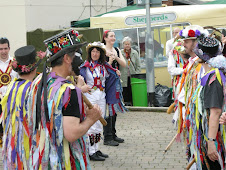














































































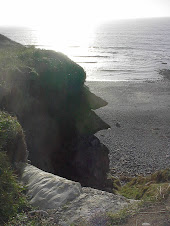


















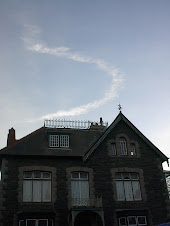





















































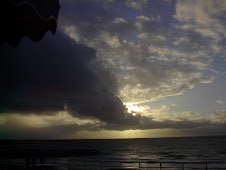














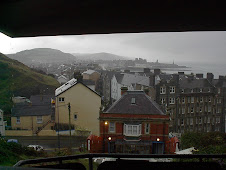

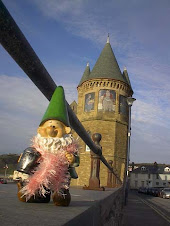
+hang+out+in+Aberystwyth+castle+ruins.jpg)







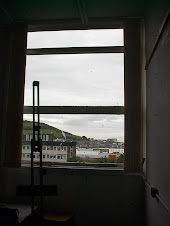























No comments:
Post a Comment